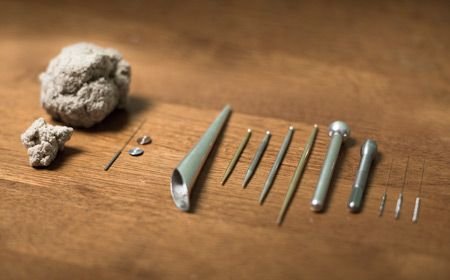What is Japanese Acupuncture?
Japanese acupuncture is a style of acupuncture that originates from traditional Chinese medicine but has evolved in Japan with its own distinctive techniques and philosophy. It emphasises gentle, precise, and often more subtle treatment compared to other forms of acupuncture, such as Traditional Chinese Medicine (TCM) acupuncture. It is a gentle and refined style of acupuncture that helps bring your body back into balance using subtle, natural techniques. Rooted in ancient wisdom and developed over centuries in Japan, it is known for its precision, sensitivity, and soothing experience.
Unlike some other forms of acupuncture, Japanese acupuncture uses extremely fine needles, often inserted very shallowly—or sometimes not at all. This makes it an ideal option for children, if you’re sensitive or new to acupuncture. Each treatment is guided by careful touch (palpation), allowing the practitioner to feel where your body is holding tension or imbalance, and adjust the treatment in real time.
A hallmark of Japanese acupuncture is its focus on both symptoms and their root causes. Whether you’re dealing with pain, stress, fatigue, or a chronic condition, the goal is always to support your body’s natural healing ability in a gentle and effective way.
Many sessions also include moxibustion, a traditional technique that involves warming specific points on the body. This creates a deeply nurturing and warming effect that many people find incredibly relaxing.
Here are some key features:
Key Characteristics of Japanese Acupuncture:
Gentle Needle Technique:
Uses thinner needles and shallower insertion.
Often uses non-insertive techniques (like the teishin tool) where needles touch the skin but don’t penetrate.
Minimal to no discomfort for the patient.
Palpation-Based Diagnosis:
Practitioners rely heavily on touch to diagnose imbalances (e.g., abdominal, pulse, or meridian palpation).
Emphasis on real-time feedback from the body to guide treatment.
Focus on Root and Branch Treatment:
Treats both the root cause (underlying imbalance) and the symptoms (branch).
Aims to balance the whole system, not just relieve surface-level symptoms.
Use of Moxa (Moxibustion):
Moxa is often used in very small amounts directly on the skin or near acupuncture points for warming and healing effects.
Japanese styles often use direct moxa in a refined and precise manner.
Minimal Stimulation Philosophy:
The belief is that the body responds best to light, focused stimulation.
Particularly suited for sensitive individuals, children, or those with chronic conditions.
Common Techniques Used:
Needle contact without insertion (shonishin – especially for children).
Teishin and other non-insertive tools.
Direct and indirect moxibustion.
Meridian Therapy, which are unique Japanese energetic systems.
Benefits of Japanese Acupuncture:
Gentle and relaxing.
Suitable for sensitive patients.
Effective for chronic conditions, stress, pain, and internal imbalances.
May be combined with lifestyle advice, bodywork, and herbal medicine.
Whether you’re seeking relief, balance, or simply space to reconnect with yourself, Japanese acupuncture offers a calm and restorative path forward.
